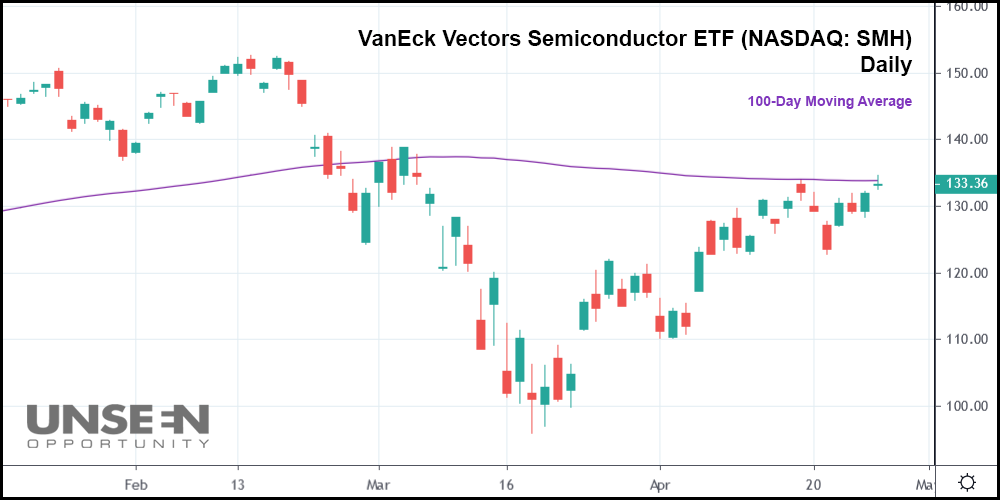An economic re-opening and stable oil.
That’s what bulls are betting on this morning as the market continues its historic post-crash rally.
The oil recovery has stalled, limiting Wall Street’s excitement, but several U.S. states are attempting to transition out of lockdown.
With COVID-19 cases dropping and hospitals considerably less overloaded, investors can smell a return to normalcy. And if they can hold on a little bit longer, stocks could even get back to normal, too.
The major indexes are still off their all-time highs by roughly 18%. Thus far, they’ve managed to soar 30% since bottoming in late March.
And though another 18% doesn’t seem like much, it might be an unachievable short-term goal if the U.S. can’t get back to work in a timely manner. It took the market only one month to regain over half of its coronavirus-induced losses.
A sell-off of equally impressive speed seems likely.
Unless, of course, enough states give the “go ahead” to re-open before reality sinks in with bulls.
Alaska, Georgia, South Carolina, Tennessee, and Texas are letting restaurants and other businesses serve customers in a limited capacity. The success (or failure) of their experiment could have a profound effect on re-opening procedures moving forward.
If it goes well, expect other states to quickly follow suit.
If it doesn’t, and Americans seem hesitant to dine out despite a reprieve from the quarantine, get ready for another correction. The fear here is that without a true medical solution or mass testing, most consumers won’t want to leave the house.
The lockdown will persist until America’s collective consciousness says it’s over. A “switch-flipping” moment won’t happen once the government calls off social distancing.
A gradual “warming period” is more likely.
How long it takes depends entirely upon COVID-19 data in the coming weeks.
“As various states begin to reopen their economies and relax social distancing rules, we will get a glimpse of what the new normal looks like,” Marc Chaikin, CEO of Chaikin Analytics, said.
“The biggest risk to the stock market is a premature reopening of the U.S. economy which results in an increase in COVID-19 cases and requires an abrupt reversal of these efforts to awaken the economy out of its engineered coma.”
And even without that “awakening,” certain sectors seem ready to pop. Particularly semiconductors, which could inexplicably go higher after an already massive recovery effort.

In fact, the sector is now butting up against its 100-day moving average – a mid-term, trend-following indicator used by technical traders to gauge bullish or bearish trends.
Typically, when the price of a security is above the 100-day moving average, it’s considered bullish. Below, it’s considered bearish.
The VanEck Vectors Semiconductor ETF (NASDAQ: SMH) is about to leap above the 100-day moving average. If it does, semiconductor stocks will officially be in a bull market in the eyes of many technical analysts.
SMH has already risen a staggering 40% from its COVID-19 crash low but now looks to punch higher.
Will it make those gains “stick” if it does?
Perhaps. The sector (as represented by SMH) could just as easily come crashing back down off the 100-day moving average.
Either way, semiconductors are now presenting traders with a choice. A bullish or bearish money-making opportunity could rapidly develop depending on how this ETF moves.
Figuring out which way the sector’s going won’t be the hard part, though.
Instead, it’ll be making the gutsy decision to buy (or sell) at the apex of a major rally.
Something far easier said than done.






